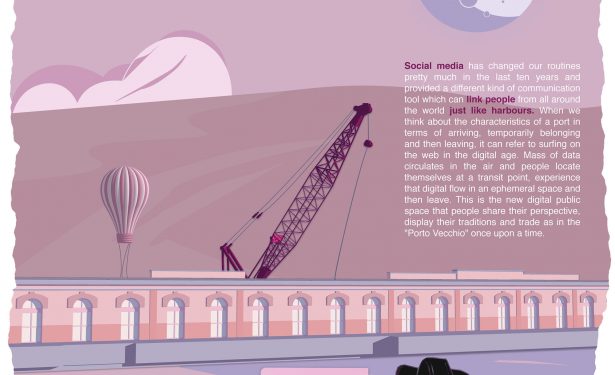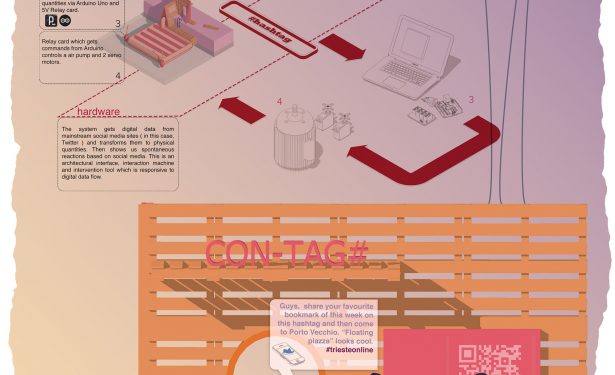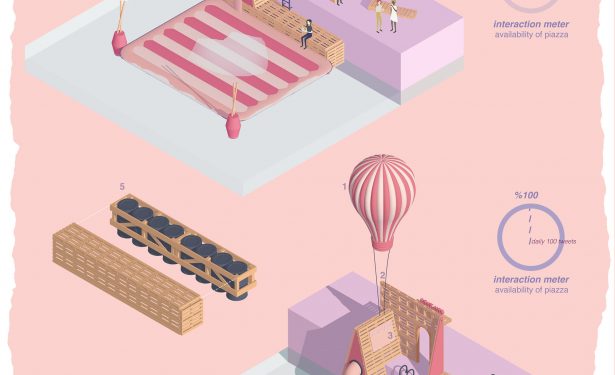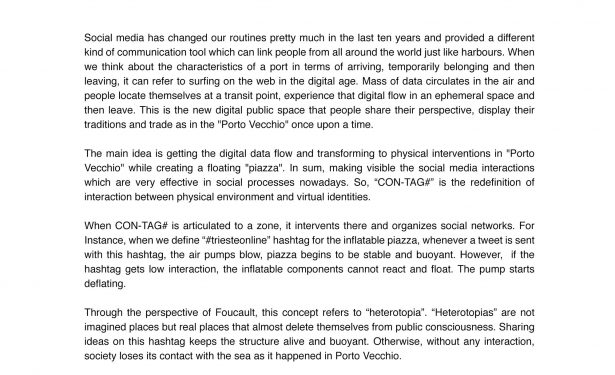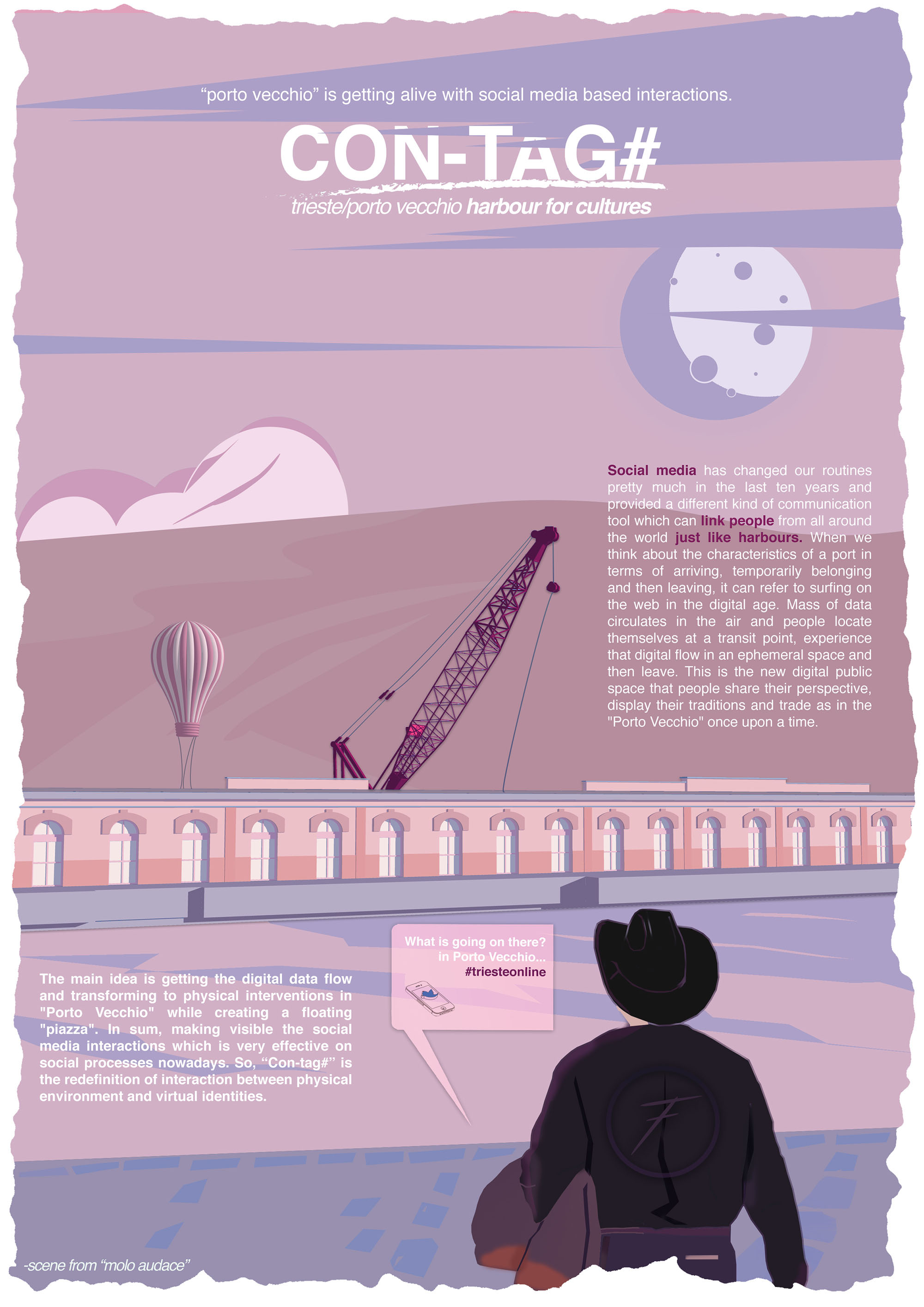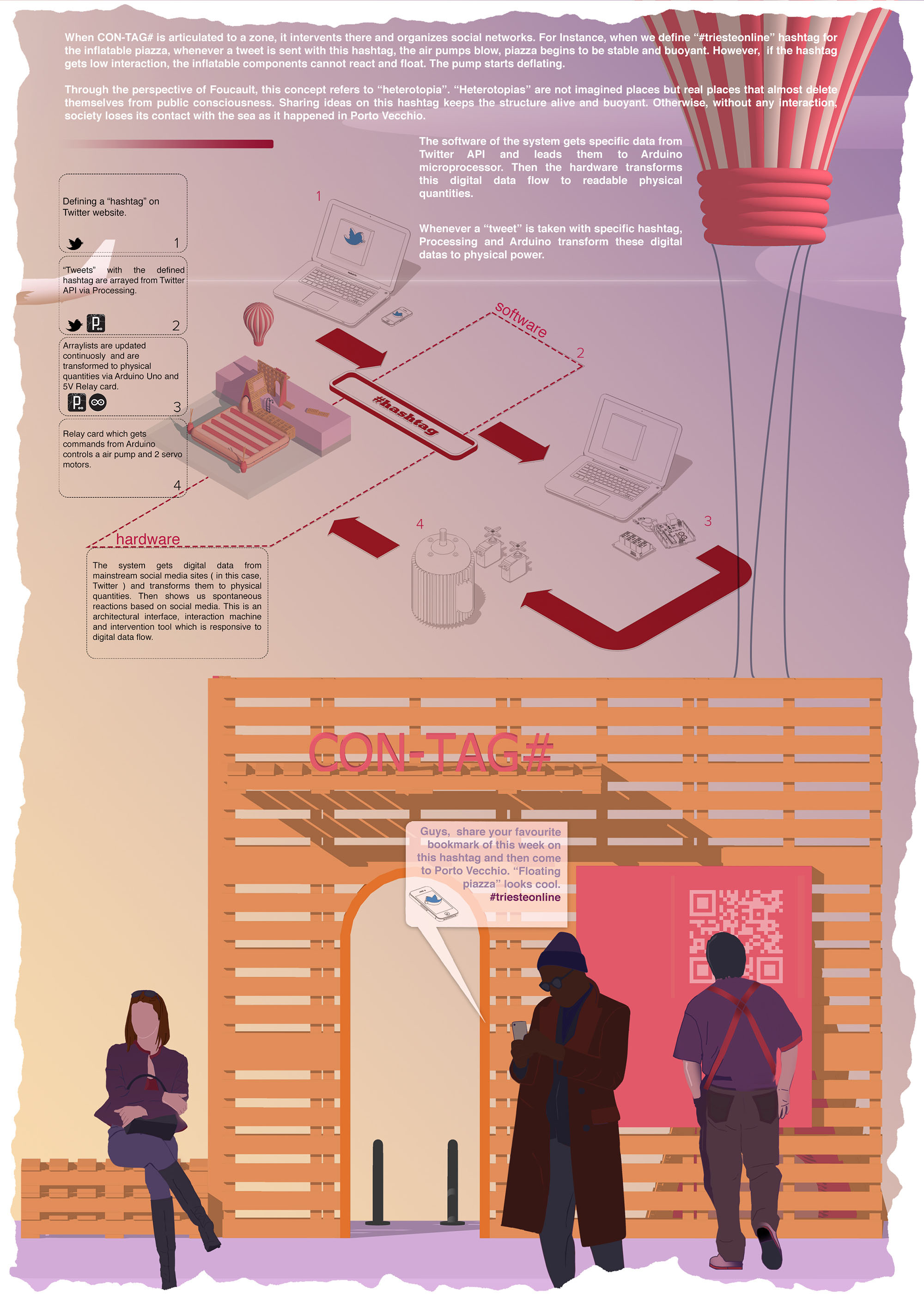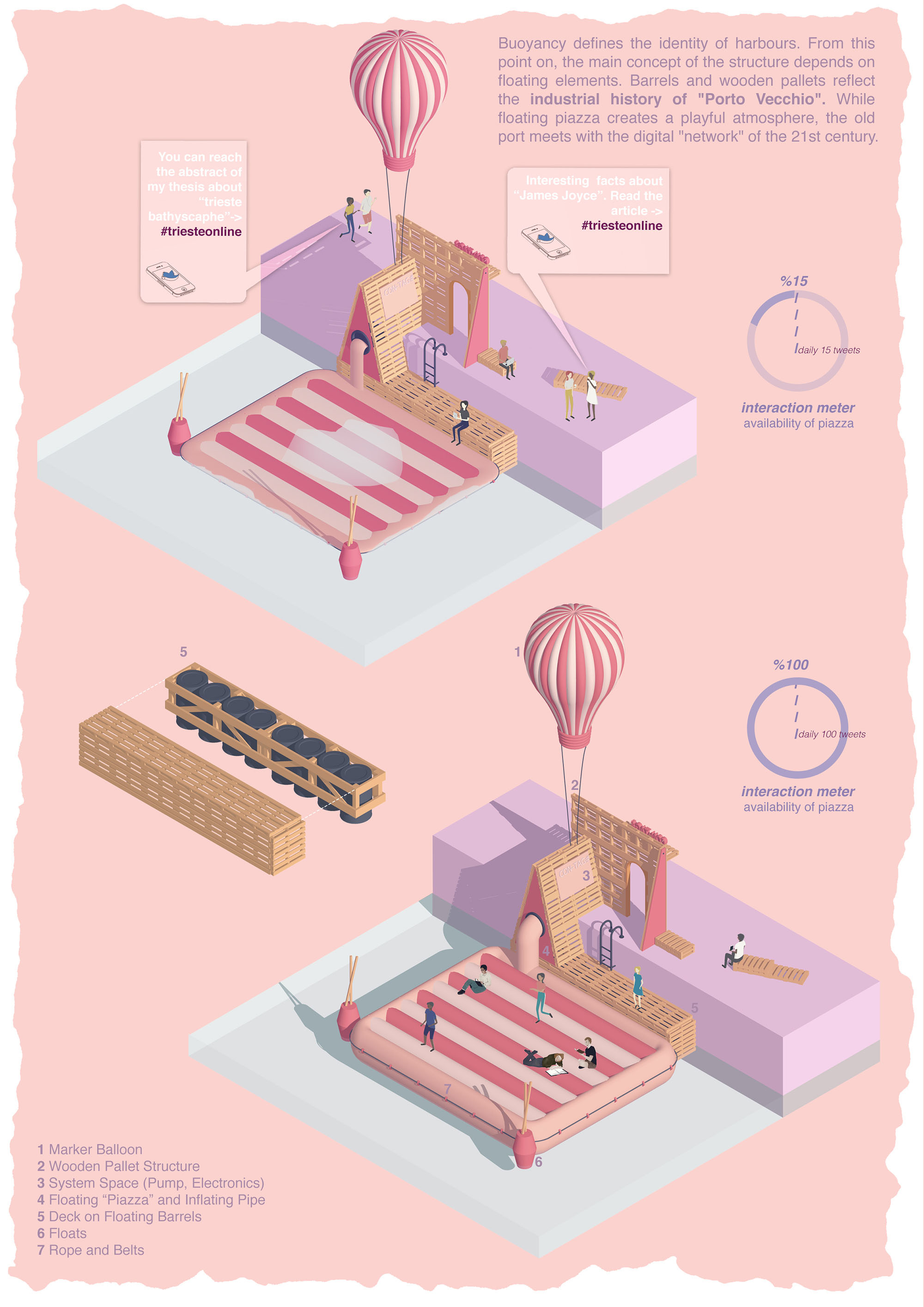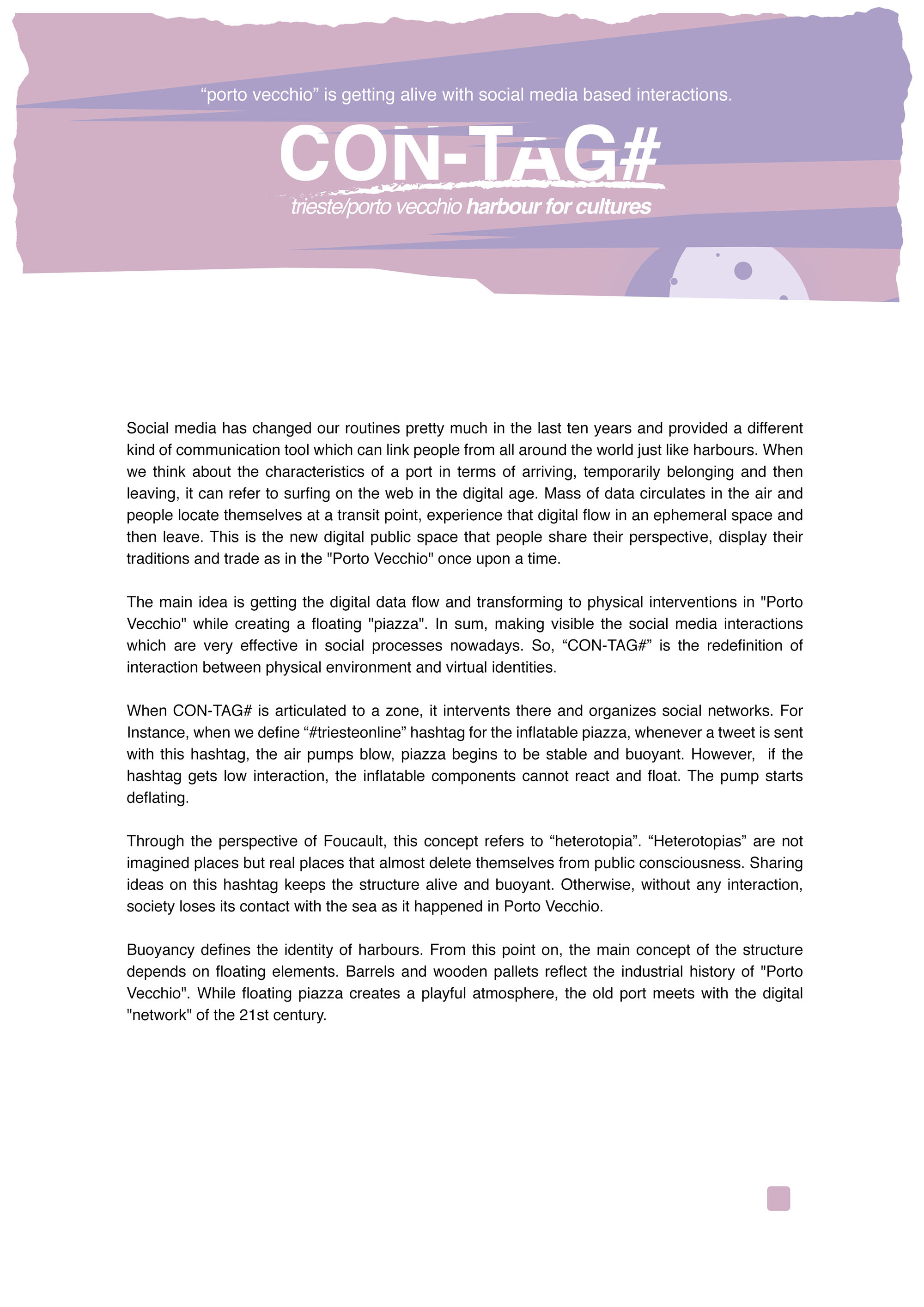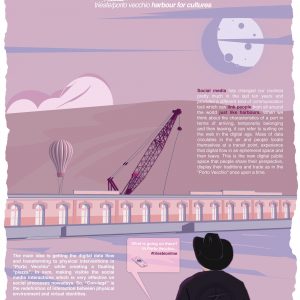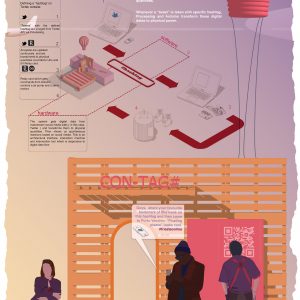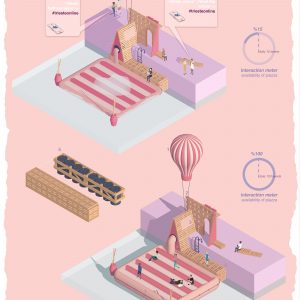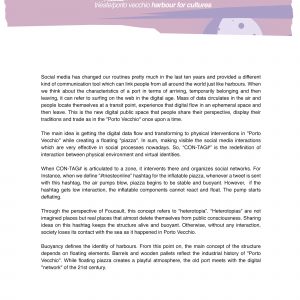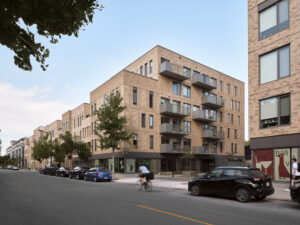- 10 Ağustos 2018
- 2261 defa okundu.
Con-Tag#
Meriç Arslanoğlu'nun Con-Tag# projesi, 13. Trieste Contemporanea yarışmasında TRIESTE ödülünün ve BEBA Ödülü'nün sahibi oldu.
Proje Açıklaması
Sosyal medya, rutinlerimizi son on yılda önemli ölçüde değiştirdi ve dünyanın farklı yerlerinden insanları birbirine bağlayan değişik bir tür iletişim aracı sağladı, aynı limanlar gibi. Limanların karakterini, varmak, bir süre oraya ait olmak ve ayrılmak üzerinden incelersek, dijital çağda internette sörf yapmaya benzetebiliriz. Bir bilgi yığını havada geziyor ve insanlar geçmekte olan bir noktaya kendilerini yerleştiriyorlar, kısa ömürlü bir mekandaki bu dijital akışı deneyimliyor ve ayrılıyorlar. Bu, aynı eskiden “Porto Vecchio”nun olduğu gibi, insanların perspektiflerini paylaştıkları, geleneklerini sergiledikleri ve ticaret yaptıkları yeni bir kamusal alan.
Projenin ana fikri, digital bilgi akışını, “Porto Vecchio”da yüzen bir “piazza” yaratarak fiziksel bir müdahaleye dönüştürmek. Özetle, bugünlerde sosyal süreçlerde oldukça etkili olan sosyal medya etkileşimlerini görünür hale getirmek. Yani “CON-TAG#”, fiziksel çevre ve sanal kimlikler arasındaki etkileşimin yeniden tanımlanması.
“CON-TAG#” bir bölgeye uyumlandığında orada sosyal ağlar organize ediyor. Mesela, yüzen meydan için #triesteonline belirlendiğinde, bu hashtag ile gönderilen her tweet ile hava pompaları şişiyor ve meydan yükseliyor. Hashtag düşük etkileşim aldığında ise meydanın şişen bölümleri aktive olamaz ve meydan yüzemez.
Foucault’nun perspektifinden, bu konsept “heterotopya” referans veriyor. “Heteretopyalar” hayal edilen mekanlar değil, “heteretopyalar” toplumun bilincinden kendisini neredeyse silen gerçek mekanlardır. Bu hashtag altında fikirleri paylaşmak, yapıyı canlı ve yüzer halde tutar. Etkileşimin olmadığı durumda, toplum, Porto Vecchio’da olduğu gibi denizle ilişkisini kaybeder.
Su üstünde olma hali limanların kimliğini belirler. Bu noktadan yola çıkarak, yapının temel konsepti yüzen elemanlara dayanmaktadır. Fıçılar ve ahşap paletler Porto Vecchio’nun endüstriyel geçmişini yansıtır. Yüzen meydan oyuncul bir atmosfer yaratırken, eski liman 21. Yüzyılın dijital ağı ile buluşur.
Description of Concept
Social media has changed our routines pretty much in the last ten years and provided a different kind of communication tool which can link people from all around the world just like harbours. When we think about the characteristics of a port in terms of arriving, temporarily belonging and then leaving, it can refer to surfing on the web in the digital age. Mass of data circulates in the air and people locate themselves at a transit point, experience that digital flow in an ephemeral space and then leave. This is the new digital public space that people share their perspective, display their traditions and trade as in the “Porto Vecchio” once upon a time.
The main idea is getting the digital data flow and transforming to physical interventions in “Porto Vecchio” while creating a floating “piazza”. In sum, making visible the social media interactions which are very effective in social processes nowadays. So, “CON-TAG#” is the redefinition of interaction between physical environment and virtual identities.
When CON-TAG# is articulated to a zone, it intervents there and organizes social networks. For Instance, when we define “#triesteonline” hashtag for the inflatable piazza, whenever a tweet is sent with this hashtag, the air pumps blow, piazza begins to be stable and buoyant. However, if the hashtag gets low interaction, the inflatable components cannot react and float. The pump starts deflating.
Through the perspective of Foucault, this concept refers to “heterotopia”. “Heterotopias” are not imagined places but real places that almost delete themselves from public consciousness. Sharing ideas on this hashtag keeps the structure alive and buoyant. Otherwise, without any interaction, society loses its contact with the sea as it happened in Porto Vecchio.
Buoyancy defines the identity of harbours. From this point on, the main concept of the structure depends on floating elements. Barrels and wooden pallets reflect the industrial history of “Porto Vecchio”. While floating piazza creates a playful atmosphere, the old port meets with the digital “network” of the 21st century.
